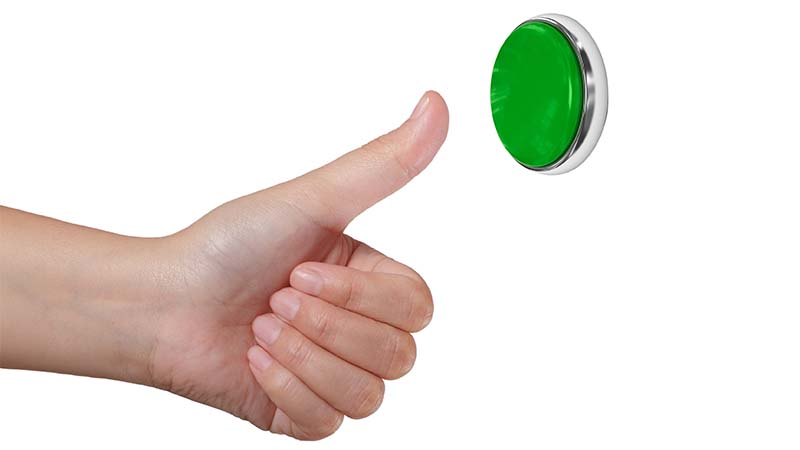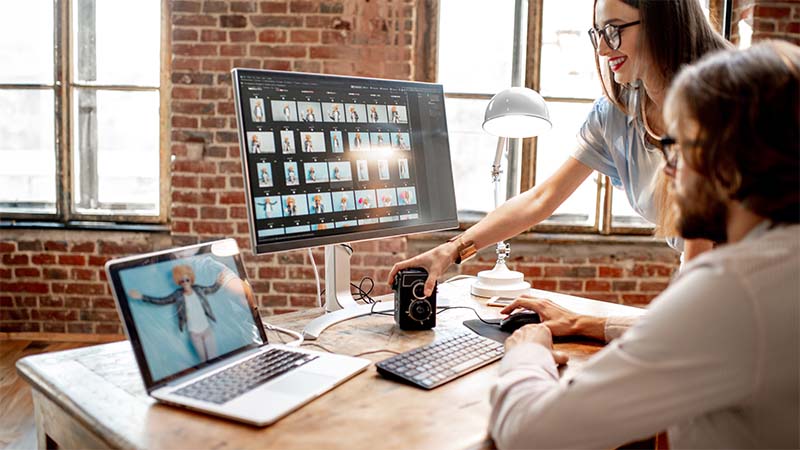Web design is an ever-evolving field, with trends constantly changing to meet user needs and technological advancements. As we move into 2024, several exciting trends are emerging that can significantly enhance user experience and engagement. This article explores the top 10 web design trends for 2024, providing insights into how they can benefit your website and keep it ahead of the curve.
Minimalist Design
Minimalist design continues to be a powerful trend in 2024, focusing on simplicity and functionality. This approach strips away unnecessary elements, leaving a clean and uncluttered interface that enhances user experience. By emphasizing essential content and functionality, minimalist design makes it easier for users to navigate and interact with your website.
- Clean Layouts: Emphasizing whitespace, minimalist designs use fewer elements to create a clutter-free environment. This enhances readability and navigation, making it easier for users to find information. The use of whitespace also creates a more visually appealing and professional look.
- Simplified Navigation: Minimalist websites often feature streamlined menus and intuitive navigation paths, reducing user frustration and improving overall experience. Simplified navigation helps users find what they need quickly and efficiently, enhancing user satisfaction.
- Focus on Content: By eliminating unnecessary elements, minimalist designs draw attention to the core content, ensuring users focus on what truly matters. This focus on content can improve engagement and ensure that users spend more time on your site.

Minimalist design not only creates aesthetically pleasing websites but also improves loading times and mobile responsiveness, crucial factors for user retention. By adopting a minimalist approach, you can create a more user-friendly and efficient website that meets the needs of modern users.
Dark Mode
Dark mode is gaining popularity for its sleek appearance and user-friendly benefits, particularly in low-light environments. This design trend offers a stylish and modern look while also providing practical benefits for users. Implementing dark mode can make your website more appealing and accessible to a wider audience.
- Reduced Eye Strain: Dark mode can lessen eye strain, especially in low-light settings, making it more comfortable for users to browse websites for extended periods. This can lead to longer browsing sessions and increased user engagement.
- Battery Efficiency: For OLED screens, dark mode can conserve battery life, appealing to mobile users who prioritize energy efficiency. This benefit can attract users who are conscious of their device’s battery life and prefer websites that offer energy-saving features.
- Modern Aesthetic: Dark mode provides a contemporary and stylish look, appealing to users who prefer a sophisticated web experience. This modern aesthetic can help your website stand out and attract a more design-conscious audience.
Implementing dark mode can enhance user satisfaction and ensure your website caters to diverse user preferences. By offering both light and dark modes, you can provide a more customizable and user-friendly experience.
Micro-Interactions
Micro-interactions are subtle animations or visual feedback that engage users and enhance interactivity. These small design elements can have a big impact on user experience, making interactions more intuitive and enjoyable. By incorporating micro-interactions, you can create a more engaging and dynamic website.
- Button Animations: When users click or hover over buttons, small animations can provide immediate feedback, improving user experience. These animations can make interactions feel more responsive and satisfying, enhancing overall engagement.

- Loading Indicators: Creative loading indicators entertain users while they wait, reducing perceived load times and frustration. By making the loading experience more enjoyable, you can improve user retention and satisfaction.
- Form Validations: Real-time feedback during form filling can guide users and prevent errors, streamlining the submission process. This can lead to higher conversion rates and a smoother user experience.
These tiny details significantly impact user engagement, making interactions more enjoyable and intuitive. By focusing on micro-interactions, you can create a more polished and user-friendly website that keeps users coming back.
3D Visuals and Animations
3D visuals and animations add depth and realism to web designs, creating immersive experiences. These advanced design elements can captivate users and make your website stand out from the competition. By incorporating 3D visuals and animations, you can create a more engaging and memorable web experience.
- Interactive Elements: 3D elements that respond to user interactions can make websites more engaging and memorable. These interactive elements can enhance user satisfaction and encourage longer browsing sessions.
- Storytelling: Using 3D animations to tell a story can captivate users, keeping them on the site longer and improving brand recall. Storytelling through 3D animations can make your content more compelling and engaging.
- Product Visualization: For e-commerce, 3D product views allow users to see items from all angles, enhancing the shopping experience. This can lead to higher conversion rates and increased customer satisfaction.
Incorporating 3D visuals can set your website apart, offering a unique and dynamic user experience. By leveraging the power of 3D design, you can create a more immersive and engaging website that leaves a lasting impression on users.
Mobile-First Design
With the increasing use of mobile devices, mobile-first design prioritizes mobile user experience. This approach ensures that your website functions seamlessly on all screen sizes, providing a consistent and user-friendly experience. By focusing on mobile-first design, you can meet the needs of a growing mobile audience and improve overall user satisfaction.
- Responsive Layouts: Designing with mobile devices in mind ensures that your website is fully responsive and functions well on all screen sizes. This can lead to improved user experience and higher engagement rates across all devices.
- Simplified Navigation: Mobile-first design often involves simplified navigation menus, making it easier for users to find what they need on smaller screens. This can reduce user frustration and improve overall satisfaction.
- Fast Load Times: Optimizing for mobile often leads to faster load times, improving user experience and reducing bounce rates. Fast load times are crucial for retaining mobile users and ensuring a smooth browsing experience.
Focusing on mobile-first design ensures your website meets the needs of a mobile-centric audience, enhancing usability and accessibility. By prioritizing mobile users, you can create a more inclusive and user-friendly website.
Sustainable Web Design
Sustainable web design focuses on reducing the environmental impact of websites. This approach involves optimizing your website to use fewer resources and create a smaller carbon footprint. By adopting sustainable web design practices, you can appeal to environmentally conscious users and contribute to a greener internet.
- Efficient Coding: Using efficient coding practices can reduce energy consumption, contributing to a greener internet. This can also lead to faster load times and improved performance.

- Optimized Images: Compressing and optimizing images can reduce load times and energy usage, improving performance and sustainability. This can enhance user experience and reduce your website’s environmental impact.
- Eco-Friendly Hosting: Choosing eco-friendly hosting providers can further reduce your website’s carbon footprint. This can demonstrate your commitment to sustainability and attract environmentally conscious users.
Adopting sustainable web design practices can appeal to environmentally conscious users and demonstrate your commitment to sustainability. By creating a more sustainable website, you can contribute to a greener internet and attract a more eco-friendly audience.
Advanced Typography
Typography plays a crucial role in web design, and advanced techniques are emerging to enhance readability and aesthetics. By leveraging advanced typography, you can create a more visually appealing and engaging website. This can help you stand out from the competition and create a unique brand identity.
- Custom Fonts: Using custom fonts can create a unique and recognizable brand identity, setting your website apart from competitors. Custom fonts can enhance your website’s overall look and feel, making it more memorable. They also allow you to infuse personality into your text, aligning it with your brand’s voice and message.
- Variable Fonts: Variable fonts allow for dynamic adjustments to weight, width, and other properties, improving flexibility and performance. This can lead to a more customizable and user-friendly design. By utilizing variable fonts, you can ensure that your typography adapts seamlessly to different devices and screen sizes.
- Typography Animation: Subtle animations can draw attention to key text elements, enhancing engagement and visual appeal. Typography animations can make your content more engaging and improve overall user experience. These animations can be used to highlight important information or guide users through your content more effectively.

Advanced typography techniques can elevate your website’s design, making it more visually appealing and engaging. By focusing on typography, you can create a more polished and professional website that captures users’ attention.
Conclusion
Staying updated with the latest web design trends is essential for creating modern, user-friendly websites. In 2024, trends like minimalist design, dark mode, micro-interactions, and advanced typography are set to redefine web experiences. By incorporating these trends, you can enhance user engagement, improve accessibility, and create a unique, memorable web presence. Embracing these innovations ensures your website remains competitive and meets the evolving needs of your audience. Adopting these trends can help you stay ahead of the curve and provide an exceptional user experience that keeps visitors coming back.
